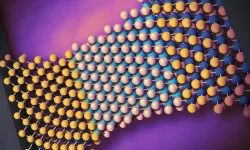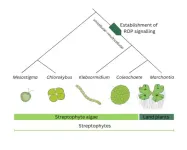(Press-News.org) The increased legalization of cannabis over the past several years can potentially increase its co-use with alcohol. Concerningly, very few studies have looked at the effects of these two drugs when used in combination. In a series of new studies, researchers at the University of Illinois Urbana-Champaign used rats to understand how brain structure and behavior can change when cannabis and alcohol are taken together.
Most researchers have studied the effects of either alcohol or THC (delta-9-tetrahydrocannabinol), the primary psychoactive drug in cannabis, alone. However, when people, especially adolescents, use these drugs, they often do so in tandem. Even when researchers study the co-use of these drugs, it involves injecting the animals with the drugs, which does not mirror what happens in humans.
“It’s rare that a person would have these drugs forced upon them. Also, other studies have shown that the effects of a drug are very different when an animal chooses to take it compared to when it is exposed against its will,” Lauren Carrica, a graduate student in the Gulley lab. “Our study is unique because the rats have access to both these drugs and they choose to consume them.”
The researchers used young male and female rats to mimic adolescence in humans. During feeding time, the animals were exposed to recreational doses (3 mg/kg-10 mg/kg) of THC that was coated on Fudge Brownie Goldfish Grahams and a sweetened 10% ethanol solution. The control group of rats were fed just the cookies and sweetened water in addition to their regular food.
“Training them to eat the drug was simple. We mimicked the timing that humans are more likely to take the drugs—at the end of the day. We did not deprive them of food or water. They were given an alcohol bottle in place of their water bottle during the access period and they preferred eating the cookies over their regular chow,” said Nu-Chu Liang, an associate professor of psychology.
After 20 days of increasing THC doses, rats were drug-free as they grew into young adulthood. The researchers took blood samples from the rats and also tested their memories to see if the co-use of drugs had any effect. Briefly, rats were required to remember the location of a target lever after a delay period that ranged from very short to very long. If they remembered the location, and pressed the target lever, they earned a food reward. If they responded on the wrong lever, no food was delivered.
“The effects were more pronounced in females and they had higher levels of chemicals that are produced when THC is broken down. Even so, the influence of THC on memory were modest,” Carrica said. “These volitional, low-to-moderate doses of alcohol, THC, or both drugs did not induce long lasting, serious cognitive defects.”
“The subtlety of these effects is not surprising because we have modeled how these drugs are taken in a social setting over a relatively short period of time,” said Joshua Gulley (GNDP), a professor of psychology. “Our results with the female rats are in agreement with other research that has shown that women who take edibles often have a different experience, which may be due to differences in how their bodies break down the drug.”
In this first study the researchers were unable to expose the rats to higher levels of THC because the rats would ignore the THC-laced cookies. “When you gave them higher doses, some animals lost interest in the cookies, and it is unclear why. It’s possible that they don’t like the higher doses or there is something about the taste or smell that becomes aversive,” Gulley said.
Although there were modest differences in behavior, the group still wanted to check whether anything had changed in the signaling pathways in the brain, especially at higher levels of THC. In the second paper they did so by injecting alcohol-drinking or non-drinking adolescent rats with THC doses ranging from 3 mg/kg to 20 mg/kg. Similar to the first study, the injections and alcohol drinking were then stopped and the rats were tested once they reached early adulthood.
Just like humans, rat brains undergo significant changes during adolescence, particularly in the prefrontal cortex, which helps them adapt to changing environments. The neurons in the prefrontal cortex modify their connections—a process referred to as synaptic plasticity—from the end of adolescence into young adulthood, according to Gulley.
The researchers wanted to test whether drug exposure during adolescence could change the ability of the brain to undergo synaptic plasticity as an adult. Therefore, they sacrificed the rats and measured the electrical signals generated in the brain.
“We found that alcohol and THC together significantly reduced, and in some cases prevented, the ability of the prefrontal cortex in drug-exposed rats to undergo plasticity in the same way that the brains from control animals can,” said Linyuan Shi, a graduate student in the Gulley lab. “The effects were apparent in rats exposed to either drug alone, and they were most pronounced with co-exposure to both drugs. We also found the impaired plasticity was likely due to changes in signaling caused by gamma-aminobutyric acid, a chemical messenger in the brain. When we used a chemical that enhances GABA, it could rescue the deficits we saw in the animals that had been exposed to the drugs.”
The researchers are now interested in understanding which neurons are involved in the response to the drugs. “From these studies, and the work our group has done with methamphetamine, we know that drug exposure during adolescence has the ability to disrupt cognitive functioning by altering the development of neuronal signaling in the prefrontal cortex. Although different drugs influence the brain in different ways, they might have the same effect on the brain that can manifest as cognitive disruptions later in life,” Gulley said. “Our ultimate goal is to harness our knowledge of these changes to develop treatment approaches for reversing cognitive dysfunctions that are associated with long-term drug use and addiction.”
The study “Effects of combined use of alcohol and delta-9-tetrahydrocannibinol on working memory in Long Evans rats” was published in Behavioural Brain Research and can be found at https://doi.org/10.1016/j.bbr.2023.114475.
The study “Effects of combined exposure to ethanol and delta-9-tetrahydrocannabinol during adolescence on synaptic plasticity in the prefrontal cortex of Long Evans rats” was published in Neuropharmacology and can be found at https://doi.org/10.1016/j.neuropharm.2023.109765.
Both works were supported by the National Institute on Drug Abuse.
END
Combined use of alcohol and THC can affect rat brains, study finds
2023-11-30
ELSE PRESS RELEASES FROM THIS DATE:
Tis the season to recognize chocolate: researchers highlight high quality cacao in Colombia
2023-11-30
Scientists are working to protect the unique qualities of cacao beans grown in the Buenaventura region on the Pacific coast of Colombia.
In a study published in the Journal of the Science of Food and Agriculture, researchers from the Colombian Corporation for Agricultural Research (AGROSAVIA) have examined a wealth of metrics to uncover the complex interactions between environmental factors and cacao quality.
In a pioneering move, they have proposed that Buenaventura should be designated as a new Denomination of Origin (DO) for cacao trees. This is a legal recognition given to products that originate ...
Straining memory leads to new computing possibilities
2023-11-30
By strategically straining materials that are as thin as a single layer of atoms, University of Rochester scientists have developed a new form of computing memory that is at once fast, dense, and low-power. The researchers outline their new hybrid resistive switches in a study published in Nature Electronics.
Developed in the lab of Stephen M. Wu, an assistant professor of electrical and computer engineering and of physics, the approach marries the best qualities of two existing forms of resistive switches used for memory: memristors and phase-change materials. Both forms have been explored for their advantages over ...
Antarctica's ancient ice sheets foreshadow dynamic changes in Earth’s future
2023-11-30
MADISON – Nineteen million years ago, during a time known as the early Miocene, massive ice sheets in Antarctica rapidly and repeatedly grew and receded. The Miocene is widely considered a potential analog for Earth's climate in the coming century, should humanity remain on its current carbon emissions trajectory.
Identifying how and why Antarctica's major ice sheets behaved the way they did in the early Miocene could help inform understanding of the sheets' behavior under a warming climate. Together, the ice sheets lock a volume of water equivalent to more than 50 meters of sea level rise and influence ocean currents that affect marine food webs and regional climates. ...
Modular chimeric cytokine receptors improve CAR T–cell therapy for solid tumors
2023-11-30
(MEMPHIS, Tenn. – November 30, 2023) Immunotherapy using modified chimeric antigen receptor (CAR) T cells has greatly improved survival rates for pediatric patients with relapsed and recurrent leukemia. However, these therapies are not as effective in treating solid tumors and can have significant toxicity. Findings from St. Jude Children’s Research Hospital showed that adding a modular chimeric cytokine receptor to CAR T cells increased their efficacy in multiple solid tumor models. The study was published today in Nature Biomedical Engineering.
“We designed modular chimeric cytokine receptors and showed that ...
Climate: why disinformation is so persistent
2023-11-30
Melting of glaciers, rising sea levels, extreme heat waves: the consequences of climate change are more visible than ever, and the scientific community has confirmed that humans are responsible. Yet studies show that a third of the population still doubts or disputes these facts. The cause is disinformation spread by certain vested interests. To try and prevent this phenomenon, a team from the University of Geneva (UNIGE) has developed and tested six psychological interventions on nearly 7,000 participants from twelve countries. The research, published in ...
Early body contact develops premature babies' social skills
2023-11-30
Skin-to-skin contact between parent and infant during the first hours after a very premature birth helps develop the child's social skills. This is according to a new study published in JAMA Network Open by researchers from Karolinska Institutet and others. The study also shows that fathers may play a more important role than previous research has shown.
In current practice, very premature babies are usually placed in an incubator to keep them warm and to stabilize them during the first hours after birth. In the “Immediate parent-infant skin-to-skin study” (IPISTOSS), 91 premature babies born at 28 to 33 weeks were randomized to either ...
ROP signaling: Origin at dawn of multicellular plant life
2023-11-30
Plants regulate their development with a distinct group of molecular players. ROP proteins, a group of plant-specific proteins, are known to control plant tissue formation. Now, Hugh Mulvey and Liam Dolan at the GMI show that ROP proteins evolved at the transition between unicellular and multicellular plant life. The findings are published on November 30 in the journal Current Biology.
Being non-mobile, plants follow a very different lifestyle from us animals. To grow and develop, plants also need a distinct ...
Twin research indicates that that a vegan diet improves cardiovascular health
2023-11-30
In a study with 22 pairs of identical twins, Stanford Medicine researchers and their colleagues have found that a vegan diet improves cardiovascular health in as little as eight weeks.
Although it’s well-known that eating less meat improves cardiovascular health, diet studies are often hampered by factors such as genetic differences, upbringing and lifestyle choices. By studying identical twins, however, the researchers were able to control for genetics and limit the other factors, as the twins grew up in the same households ...
A mineral produced by plate tectonics has a global cooling effect, study finds
2023-11-30
MIT geologists have found that a clay mineral on the seafloor, called smectite, has a surprisingly powerful ability to sequester carbon over millions of years.
Under a microscope, a single grain of the clay resembles the folds of an accordion. These folds are known to be effective traps for organic carbon.
Now, the MIT team has shown that the carbon-trapping clays are a product of plate tectonics: When oceanic crust crushes against a continental plate, it can bring rocks to the surface that, over ...
Age disparities in prevalence of anxiety and depression among adults during the pandemic
2023-11-30
About The Study: In this study of 3 million U.S. adults, anxiety and depression were significantly higher among adults ages 18 to 39 compared with adults age 40 and older during the COVID-19 pandemic. Less favorable economic conditions and responses to social upheaval may have contributed to young adults’ worse mental well-being. These findings suggest a need for greater mental health care and economic policies targeted toward younger adults.
Authors: Sarah Collier Villaume, Ph.D., of Northwestern University in Evanston, ...




